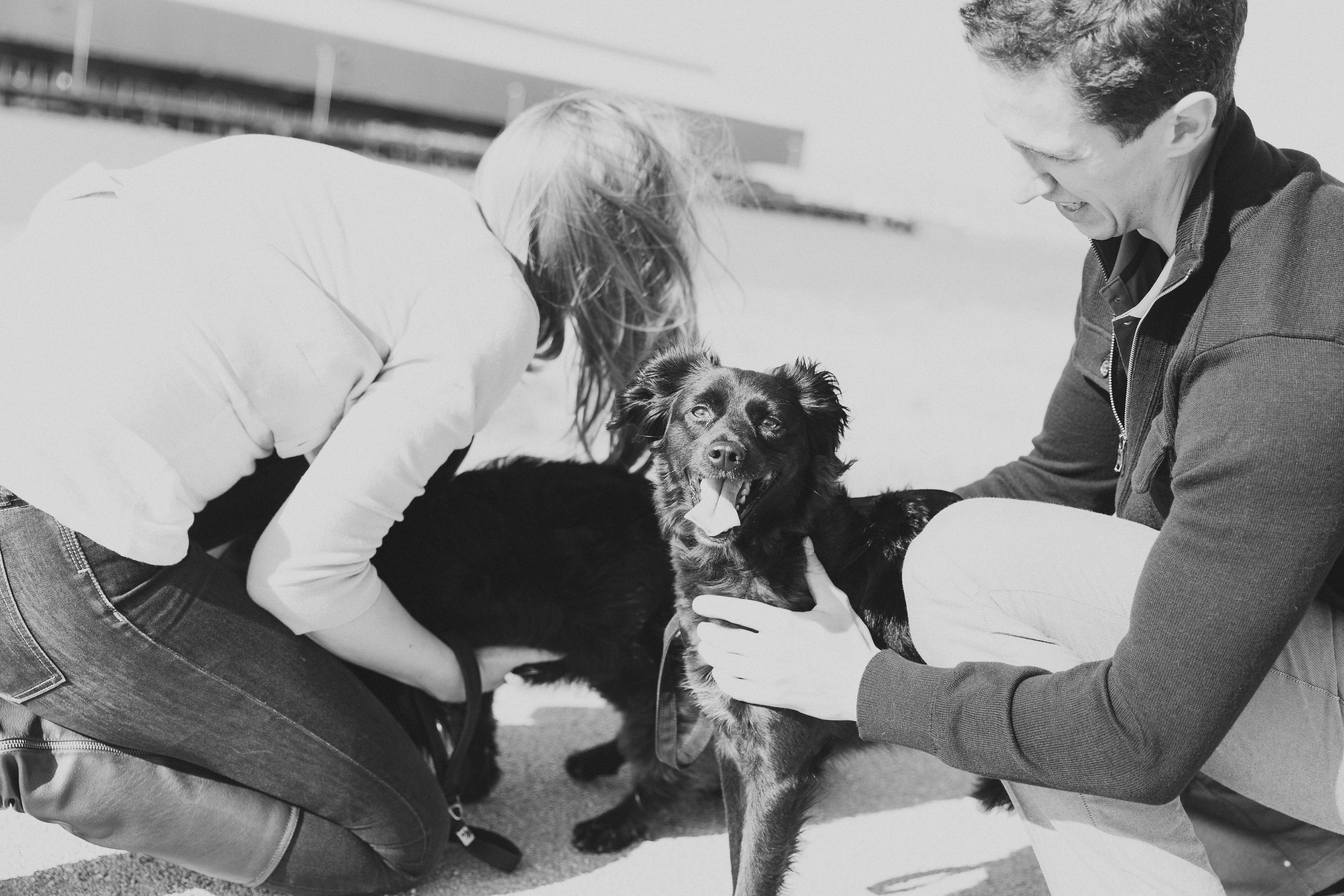Is there any dog species prone to pancreatitis?
In general, pancreatitis can occur in all dogs but is more common in domesticated dogs than wild dogs. The chief reason is the food given to them. Dogs, both large and small, can develop pancreatitis. Overall, pancreatitis tends to be more common in elderly and female dogs.
How does pancreatitis in dogs present?
When pancreatitis occurs, the symptoms depend on the intensity of inflammation. In most cases, the following symptoms will be present:
- The dog will not be energetic and will prefer to lie down.
- There is usually no appetite.
- Touching the dog’s underside can lead to pain.
- There may be a low-grade fever.
- The dog will appear dehydrated. The reason for this is the refusal to drink because of the abdominal pain.
- Watery diarrhea may develop because no food is digested and is thus, excreted in the feces.
- In severe cases, the dog’s breathing may be shallow and labored.
- The heart rate will be fast.
- If the duration of pancreatitis is prolonged, there is significant weight loss.
What causes pancreatitis in dogs?
- Any type of external injury to the mid abdomen.
- If you live in Arizona, Texas or New Mexico, scorpion stings can cause pancreatitis. Even though the venom is potent, it can cause mild to moderate pancreatitis.
- Use of certain cancer drugs.
- Overweight dogs tend to be more prone to pancreatitis than underweight dogs.
- Raised levels of blood calcium can result in damage to the pancreas.
Are there any foods that cause canine pancreatitis?
The most common causes of canine pancreatitis is diet, especially that which includes human food. Foods that are concentrated with saturated fats, including cholesterol, are frequently associated with pancreatitis.
How is the diagnosis of pancreatitis in dogs made?
Even though the vet may suspect pancreatitis based on the history and presentation, a number of tests are often required to confirm the diagnosis. These tests include:
- Checking for levels of calcium and cholesterol in blood.
- Measuring levels of pancreatic enzymes in blood.
- Sometimes an x-ray of the abdomen is done to look for precipitates of calcium around the pancreas.
- If a mass or some type of injury is suspected, an ultrasound of the abdomen is performed.
Can pancreatitis in the dog be treated at home?
In general, it is important to have a diagnosis before you start self-treatment. Pancreatitis is a serious disorder that can rapidly turn fatal. Only the mildest cases of canine pancreatitis are treated at home. The basic treatment of pancreatitis is to stop the offending agent and rest the pancreas. This means no food for 3-7 days, only liquids.
Which dogs with pancreatitis need to be admitted?
Most dogs that develop moderate to severe pancreatitis will not be able to drink or eat. This can quickly lead to dehydration and shock. Thus, an intravenous is needed to administer fluids. Depending on the severity of pancreatitis, the dog may require admission for 3-7 days. Aside from hydration, other treatments for canine pancreatitis include the following:
- Pain medications.
- Medications to stop vomiting.
- Administration of supplements like potassium.
- If there is an infection, antibiotics are also administered.
What is the role of surgery?
In general, surgery is the last resort and only done in a few cases. In some dogs, there is severe damage to the pancreas associated with a florid infection. In such scenarios, the vet will explore the abdomen and remove all the necrotic tissues. Mind you, these dogs are very ill and mortality rates are also high.
What is recovery like from canine pancreatitis?
Once the dog comes home, it is important to allow the pet to rest. After a bout of pancreatitis, recovery can take 7-30 days depending on its severity. The dog will usually be exhausted and tired. Do not force it to do physical activity, but provide pain medications and ample fluids to drink. The decision to start solid food requires good judgement. Remember, when you introduce food, it also stimulates the pancreas to release the potent enzymes, which can cause a flare up. The pancreas must be healed before you start the introduction of food. The dog should be alert and have no abdominal pain, fever, or vomiting. In general, after a mild bout of pancreatitis at least 2-4 days of no solid food is necessary and this period needs to be prolonged if the pancreatitis was severe. Start with liquid foods and see how the dog tolerates. Advance to solid food very slowly.
“Start with liquid foods and see how the dog tolerates. Advance to solid food very slowly.”
It is important to avoid foods high in fat and protein content, as these foods stimulate the release of enzymes, which can trigger pancreatitis. Instead, today there are several types of commercial dog foods that are high in carbohydrate and low in fat content.
What is prognosis after canine pancreatitis?
The prognosis depends on the severity of the pancreatitis. After a severe bout of pancreatitis, the dog may suffer injury to many organs and may even die. However, those with mild to moderate pancreatitis can have a good outcome but the recovery is often prolonged.
How can I prevent pancreatitis in dogs?
- Avoid excess weight gain in the dog- and this means regular exercise.
- Avoid feeding the dog diets that are rich in cholesterol and saturated fats.
- Give the dog a diet that is high in carbohydrate and low in fat.
- Do not feed the dog junk food like pizza, burgers, ice cream etc.
Conclusion
Pancreatitis in dogs is a serious illness and all dog owners should know the symptoms. The earlier you bring the dog to the vet, the better the prognosis.

